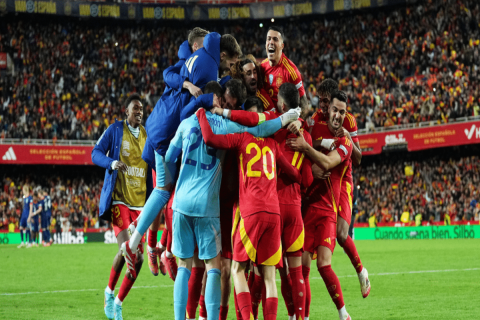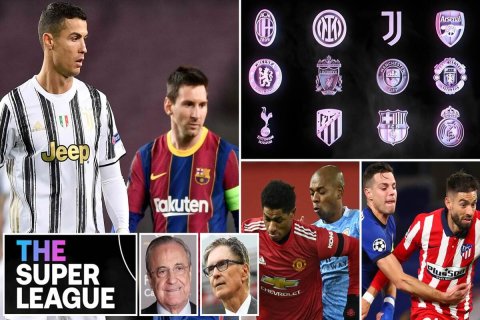The United States is experiencing a soccer revolution—international viewership has exploded, with more Americans than ever tuning in to watch the Champions League, LaLiga, Bundesliga, and other major global competitions.
The Rise of Global Soccer Fever in the U.S.
Not long ago, soccer in the United States was viewed as a secondary sport, overshadowed by American football, basketball, and baseball. Today, however, the picture has dramatically changed. A 60% surge in international soccer viewership over the past few years has transformed the landscape of American sports entertainment. U.S. audiences are no longer just watching the national teams or Major League Soccer—they are fully embracing the global stage of the sport.
What was once a niche interest has evolved into a cultural phenomenon. Streaming platforms and sports networks report record-breaking numbers for matches from Europe’s top leagues, including the Champions League, LaLiga, and the Bundesliga. Millions of fans are tuning in during weekday afternoons to watch games live from Madrid, Munich, and Manchester. The passion that once belonged primarily to European or Latin American fans has now taken deep root in the United States.
The Streaming Revolution and Accessibility
One of the key forces driving this growth is accessibility. A decade ago, it was difficult for American fans to watch European soccer. Matches were limited to a few select cable channels, and coverage was inconsistent. Now, the emergence of streaming platforms such as Paramount+ (Champions League), ESPN+ (LaLiga, Bundesliga), and Peacock (Premier League) has revolutionized the way fans consume soccer content.
These platforms allow fans to watch live matches, highlights, and in-depth analysis anytime, anywhere. The combination of flexible viewing options and high-quality production has attracted a new generation of fans who prefer on-demand access over traditional TV schedules. The result is a more connected and informed fan base that follows teams across multiple continents.
Moreover, streaming services have invested heavily in marketing to American audiences, creating engaging narratives around iconic players such as Kylian Mbappé, Jude Bellingham, Vinícius Jr., and Erling Haaland. Their dynamic playing styles and global visibility have made them household names in the United States, fueling excitement for European soccer.
The Influence of Social Media and Global Branding
The digital age has played an equally important role in soccer’s surge in popularity. Social media platforms such as Instagram, TikTok, and X (formerly Twitter) have transformed how fans connect with teams, players, and each other. Clubs like Real Madrid, Barcelona, Manchester City, and Bayern Munich have built massive global followings through strategic online branding.
For American fans, these platforms provide immediate access to highlights, behind-the-scenes content, and player interactions, breaking down geographical barriers. The constant stream of engaging content makes international soccer a daily presence in people’s lives, not just something to watch on weekends.
This digital connection has also made it easier for fans to develop allegiances to clubs thousands of miles away. A teenager in Texas might wear a Borussia Dortmund jersey, while a college student in California might wake up early to catch a Real Madrid match. These cross-cultural bonds illustrate how soccer’s universal appeal transcends borders and languages.

The Impact of American Players Abroad
Another crucial factor behind the international viewership boom is the success of American players in European leagues. Athletes such as Christian Pulisic (AC Milan), Giovanni Reyna (Borussia Dortmund), Yunus Musah (AC Milan), and Folarin Balogun (AS Monaco) have become symbols of American excellence on the global stage.
When fans see American players competing against the best in the world, it fuels national pride and personal connection. Watching a familiar face succeed at clubs with rich histories gives fans a reason to tune in week after week. In addition, these players serve as role models for young athletes, proving that talent developed in the U.S. can reach the highest levels of the sport.
This phenomenon has created a feedback loop—as more Americans play abroad, more fans watch international leagues, which in turn drives more investment and interest in player development back home.
Cultural Shifts and Global Awareness
Beyond streaming and player success, there has been a broader cultural shift in how Americans view sports and entertainment. Younger generations, particularly Millennials and Gen Z, are drawn to global culture. They value diversity, international experiences, and cultural exchange, which naturally align with soccer’s worldwide identity.
Unlike many U.S.-based sports, soccer provides a direct window into different countries, languages, and traditions. Watching LaLiga or the Bundesliga is not just about the match—it’s about immersing oneself in the passion, chants, and stories of global fanbases. This connection between sport and culture appeals deeply to a generation raised on social media, travel, and digital storytelling.
Furthermore, the presence of international soccer stars in U.S. advertising and pop culture has made the sport more familiar. Players like Lionel Messi, Cristiano Ronaldo, and Neymar Jr. are not just athletes—they are global icons who appear in commercials, video games, and fashion campaigns. Their widespread visibility bridges the gap between global soccer and American mainstream culture.
The Road to the 2026 World Cup
Looking ahead, all signs point to continued growth. The 2026 FIFA World Cup, hosted across the United States, Canada, and Mexico, is expected to ignite an unprecedented wave of enthusiasm. This event will not only showcase world-class talent but also introduce millions of new fans to the game.
American broadcasters and streaming companies are already preparing for record-breaking viewership, while brands are aligning themselves with soccer content to tap into this growing audience. As the tournament approaches, the anticipation is likely to elevate both domestic soccer and international viewership even further.

The World Cup represents more than just a sporting event—it symbolizes how far soccer has come in the United States. From being a marginal interest to becoming a centerpiece of American sports culture, the evolution has been nothing short of remarkable.
Connecting the Global Boom to SIA Academy
At SIA Academy, we see this transformation every day. The rise of international soccer viewership in the U.S. mirrors what we promote: a global mindset, cultural exchange, and high-performance training inspired by the world’s best leagues. Our programs attract players from around the world, creating an environment where diverse perspectives and playing styles merge—just like the global game that American fans are now embracing.
Through our emphasis on international development, elite training, and exposure to professional opportunities, SIA Academy helps shape the next generation of players who not only watch the Champions League but also aspire to play in it. As Americans continue to connect with the global soccer community, institutions like ours bridge the gap between dreams and reality—proving that passion for the game knows no borders.






